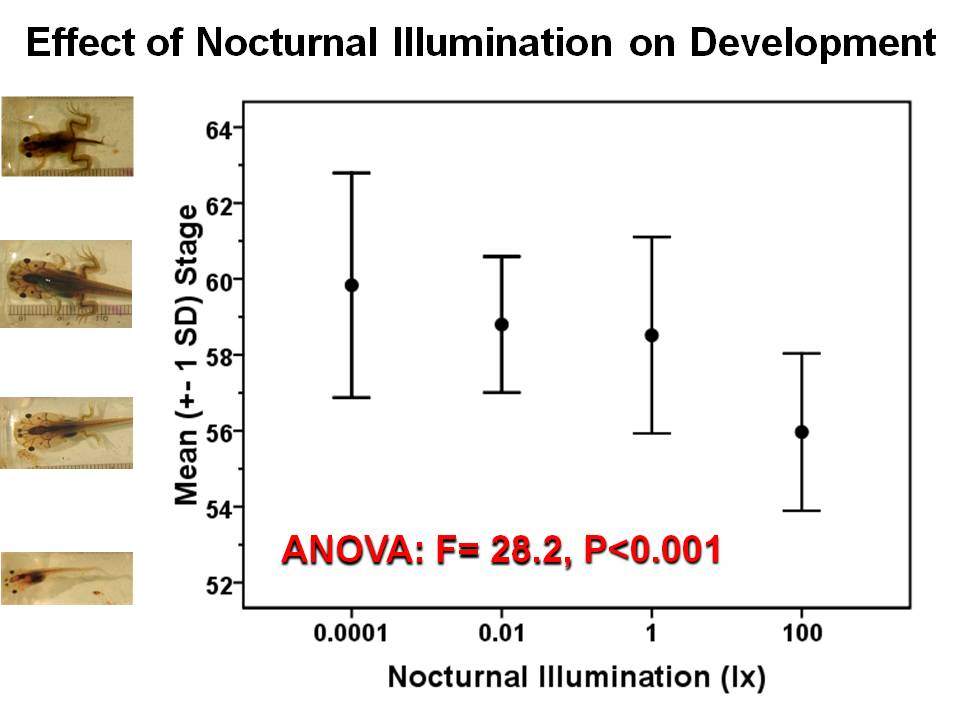Heidi Savage
Artificial Night Lighting Affects Anuran Larval Growth And Development. Buchanan, B., H. Savage, S. Wise, and K. Bingel.

Artificial night lighting (such as light pollution) in amphibian habitats can alter perceived photoperiod and has the potential to reduce plasma levels of photoperiodic hormones such as melatonin. Melatonin plays an important role in regulating other hormones including many of those involved in growth and development. Although the photoperiodic nature of melatonin expression is well established, it is unclear how much light at night is necessary to disrupt melatonin production and whether or not such disruption can affect larval growth and development. In a laboratory experiment, we compared the growth and development of African Clawed Frog (Xenopus laevis) tadpoles under three different night lighting treatments simulating different levels of light pollution and a dark control. All tadpoles were exposed to 100 lx daytime illuminations on a 12L:12D photoperiod. In the control treatment, tadpoles experienced a normal nocturnal illumination of 0.0001 lx (bright starlight). In the three experimental treatments, tadpoles experienced unnaturally high nocturnal illuminations of 0.01 lx, 1 lx, and 100 lx that correspond to different potential levels of light pollution in larval habitats. In our study, artificial night lighting affected larval size and the proportion of larvae that metamorphosed by the end of the study (approximately 2 months). A greater proportion of larvae metamorphosed in the naturally dark control treatment than in the brighter experimental treatments. Within the experimental treatments, larvae in the brightest treatment were significantly smaller than larvae in the dimmest treatment. Larvae in the control treatment were significantly smaller than larvae in the dimmest experimental treatment but did not differ in size from larvae in the other lighting treatments, probably because of their faster progression to metamorphosis. We conclude that consistent exposure to even small amounts of artificial light at night can affect anuran larval growth and development.

